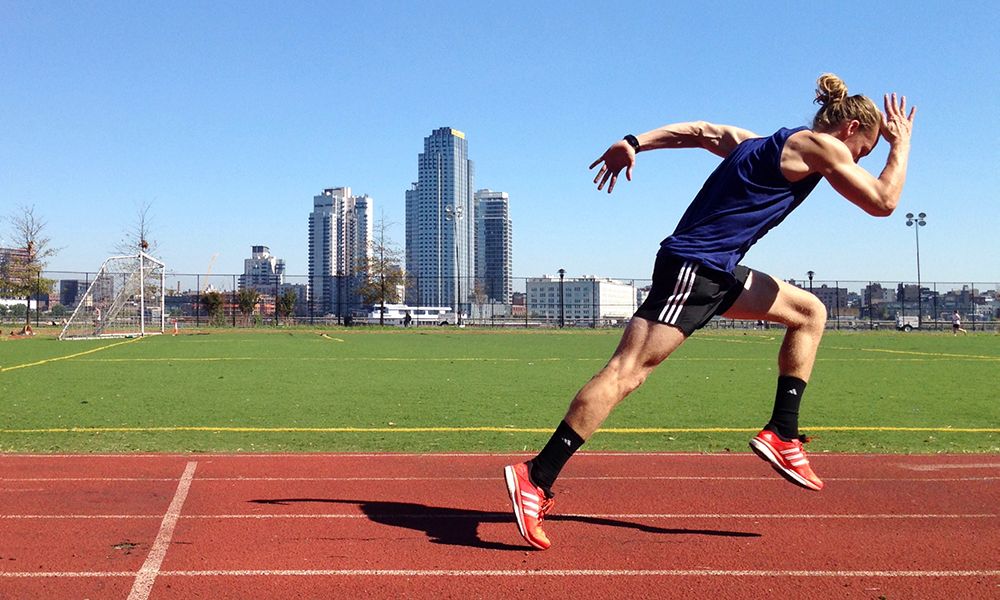Many of us fall into a single category or modality with our workout routine: cardio OR weights. In isolation, neither will lead to optimal fitness. Peak performance requires a combination of the two. While mileage builds our endurance, strength training increases speed and power with the added benefit of preventing common injuries.
In my experience, runners are often reluctant to incorporate strength and power training into a training program out of fear that it will add too much muscle or bulk, which can be undesirable when racing longer distances, such as a half or full marathon. However, the point I always seek to drive home is that strength and power training are not one size fits all; a runner’s weight training program differs greatly from that of a bodybuilder or powerlifter, as the end goals are completely different. How we approach repetitions, movements, sets and intensity will all determine the strategy needed to achieve a specific outcome. A great place to begin is with a lower number of repetitions for three to four sets. From there, variables such as altering the tempo, number of repetitions and/or base of support, will make the same movement much more challenging or simply accomplish a different goal.
To enhance our speed and truly get to that finish line faster we must increase the density of the muscle fibers in our legs and train those fibers to fire powerfully. Lower body movements ought to mimic segments of a full running stride and thus utilize all of the muscles involved in completing that movement. Breaking down the running form into segments helps to not only strengthen the muscles to be able to withstand more speed and endurance, but also helps create a stronger mind/body connection which many runners lack in certain muscles. Knee dominant movements such as the squat help strengthen the anterior running chain (quadriceps and gluteal muscle groups), whereas, hip dominant movements will help with our posterior running chain (hamstrings, calfs and gluteal muscle groups). Incoporate both of these two different types of movements (hip and knee dominant) to create the strongest stride from foot strike to push-off.
Power training is a combination of strength and speed and includes explosive movements like squat jumps or single leg jump steps. Again, adjust the intensity by manipluating sets and reps. Squats and deadlifts help create stronger lower body muscles with greater mass. I typically suggest utilizing a heavier weight and executing three to four sets of 8 to 12 repetitions per set. A good way to select a suitable weight is to choose one that causes a noticeable strain, yet allows one to maintain proper posture throughout the entire movement.
As mentioned earlier, strength and power training not only improves overall speed and endurance, it increases stability while preventing potential injuries as well. Strong muscles produce stable joints, tendons, ligaments, and bones, which results in a more powerful and consistent stride. It's a key component to running farther, faster, and decreasing the risk for injury.
Ready to give strength and power training a go? If so, start by committing to two or three strength sessions per week, and seek the advice a personal trainer or another certified individual if you have questions about movements or intensity.

